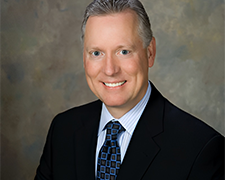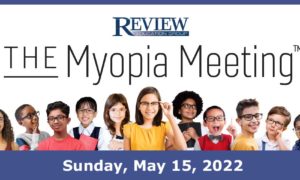sponsored content
November 16, 2020
By Moshe Mendelson, OD, FIAO
 Getting parents to say yes to a recommended myopia management treatment plan requires commitment to educating parents and motivating them to turn their child’s ocular health needs into wants. When the doctor takes the time to educate parents about why treatment should be pursued, the results will be dramatic, and most parents will embrace treatment.
Getting parents to say yes to a recommended myopia management treatment plan requires commitment to educating parents and motivating them to turn their child’s ocular health needs into wants. When the doctor takes the time to educate parents about why treatment should be pursued, the results will be dramatic, and most parents will embrace treatment.
A common scenario is when parents do not perceive sufficient benefit or value to justify the cost in their own minds, so they consider the treatment to be too expensive. This does not necessarily mean that they cannot afford it.
A Mother’s Path to Treatment
Several years ago, I saw one of my young patients for her yearly eye exam. At the conclusion of the exam, I shared with her and her mom the fact that her myopia had progressed and made a recommendation to consider orthokeratology. Her mother asked whether insurance would cover the cost. When advised that vision care insurance did not cover orthokeratology, mom said it was too expensive and instead requested the prescription for the glasses or contact lenses that were covered by her vision care insurance plan. So we prescribed single vision glasses.
Several months passed and the mother and daughter returned to the office. Mom indicated that they returned to be fitted with contact lenses. Remembering that the mother previously felt that orthokeratology was “too expensive,” I proceeded to suggest fitting her daughter with the spherical soft disposable contact lenses that were covered by insurance. Mom stopped me and said, “Dr. Mendelson, we are here today to start the orthokeratology treatment. After you explained why I should consider the treatment along with the benefits and consequences of not pursuing treatment, I believe orthokeratology is what my daughter needs.”
It Is Your Ethical Obligation
Some of my colleagues confuse educating with selling. They hold back on discussing myopia management because they don’t want to appear pushy, worry about increased cost1 or feel it is too salesy for them. Some fear rejection. To these colleagues I say, “It is your ethical obligation to discuss myopia management.”
The doctor holds a very influential position in the parent’s mind. When you present your recommendations, parents will be able to tell if you are sincere and strongly believe in what you are presenting. Your personal energy, enthusiasm and confidence in the value of the treatment influences your patient’s engagement and acceptance.
Start with Why
I found Simon Sinek’s Golden Circle2 approach to how great leaders inspire action to be instrumental for successful acceptance of our myopia treatment plan recommendations. Start with “Why.” What is the purpose/goal of what we do?
We ask parents about their understanding of myopia and address any concerns they may have with respect to myopia and its progression. Collaborative communication3 is a reciprocal and dynamic approach that involves the two-way exchange of information. This communication style helps establish a common goal that guides our efforts. Further, it exhibits a mutual respect and enhances the doctor/patient relationship and ultimately the acceptance of the treatment plan.
For example, some parents may be concerned about the appearance of glasses on their child’s face, or the child may have restrictions due to sports. Parents are not necessarily concerned about glaucoma or cataracts, which actually may be a consequence of high myopia later in life. Parents don’t want to feel pressured into buying anything. They want solutions to their needs and interests.
We also inform parents and establish an understanding about why it is in their child’s best interest to lessen myopia progression by providing validated statistics of potential vision impairment consequences for myopic individuals, such as maculopathy, retinal detachment, glaucoma and cataract later in life.
Proceed with How
For optical solutions such as orthokeratology and daytime multifocal contact lenses, we illustrate the hyperopic defocus concept and how we manipulate light trajectory as it enters the eye in order to minimize eye elongation. This illustration helps parents understand why conventional eyeglass lenses or contact lenses may actually exacerbate the problem and facilitate myopia progression.
For the atropine modality, we share the current mechanism of action theory as we understand it today.
I conclude my presentation to the patient and parent(s) by articulating what we propose specifically for the individual child and why. Options may be night lenses, day lenses, atropine or a combination therapy.
Adopting the Simon Sinek Golden Circle method will minimize the most difficult part of the consultation for many optometrists and their staff, having the parents state that the fee is too high or that they can’t afford treatment. Parents pay for the myopia management treatment plan with gratitude once they understand the value and benefits of the proposed plan.
Because insurance typically does not cover myopia management, payment options are needed and available to help make them more affordable to patients. For all myopia management not covered by insurance, present available payment options such as self-pay, health savings accounts or flexible spending accounts to enable patients to spend pre-tax dollars, and patient financing options such as the CareCredit credit card.
We review estimated out-of-pocket costs with the patient and offer patient financing with the CareCredit credit card, allowing the patient to fit costs into their monthly budget and pay over time. This also benefits the practice, which is paid within two business days. It is a win-win situation for the finances of both the patient and the practitioner, particularly during this unprecedented economic climate affected by the current coronavirus pandemic.

Moshe Mendelson OD, FIAOMC, is a Fellow of the International Academy of Orthokeratology and Myopia Control, the CEO of Silicon Valley Eye Physicians Medical Group in Sunnyvale, Calif., and a cofounder and Chief Medical Officer of EyecareLive, a telehealth platform dedicated to optometry and ophthalmology. This article is sponsored by CareCredit.
References:
1 https://www.contactlensjournal.com/article/S1367-0484(19)30258-9/abstract
2 https://simonsinek.com/product/start-with-why/
3 https://www.ncbi.nlm.nih.gov/pmc/articles/PMC2151773/
Disclaimer: This content is subject to change without notice and offered for informational use only. You are urged to consult with your individual business, financial, legal, tax and/or other advisors with respect to any information presented. Synchrony and any of its affiliates, including CareCredit, (collectively, “Synchrony”) makes no representations or warranties regarding this content and accepts no liability for any loss or harm arising from the use of the information provided. All statements and opinions in the article are the sole opinions of the author. Your receipt of this material constitutes your acceptance of these terms and conditions.













